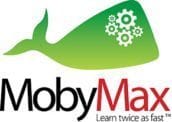With a classroom of kids whose abilities run the gamut, sometimes it seems humanly impossible to figure out which students are “getting it” and which students aren’t on a daily basis. Whether you’ve used it for months or you’re thinking about trying MobyMax for the first time, here are ideas from top teachers for using Moby’s free individualized digital curriculum to find your students’ missing skills and keep them all moving ahead at their own pace in reading, language, writing and science.
1. Teach mini-lessons when students don’t “get it.”
You don’t need to leave kids behind when they’re struggling with a concept. First, you can find the gaps in learning for each student by assigning questions from MobyMax’s item bank, and then you’ll be able to teach mini-lessons to the kids that need it.
“I’ll teach for two or three days, then assign 5 to 10 questions in MobyMax through the Clicker feature,” says Derek von Waldner, a fourth-grade math and science teacher at Screven County Elementary School in Georgia. “Then I can go in and see that student A has only 33 percent right, so I’m going to pull her [aside] and make sure she really understands what I’m talking about. Whereas student B has 90 percent right, so I’m going to let him go on to the next rotation and not worry about it.”
2. Stay in the loop (even when you’re out sick).
You know those days when you wake up sick, but you drag yourself to school because the thought of how far behind you’ll be if you stay home seems so much worse? Well, with MobyMax, you might actually be able to get a little R&R when you’re feeling under the weather. When Carolyn Brown is out sick, she keeps an eye on students from home through MobyMax by sending them reminder messages to keep working hard.
“What I like is that I can keep track of how much time they’re spending on [MobyMax],” says the second grade teacher from Peakview Elementary School in Walsenburg, Colorado. “I tell the kids, ‘I can check from home. I can see if someone had six minutes of time and another student had 15 minutes—what does that tell me? Are you using your time wisely?’”
Sometimes Brown’s students even send her a message through MobyMax on the weekends, and she can respond with encouragement from afar. Parents can also get online and monitor student progress.

3. Customize lessons so kids don’t get frustrated.
When students get frustrated, teachers tend to get frustrated too, so if there’s a way to individualize lessons—resulting in less frustration all around—we’re all ears! Once Brown knows what level her students are on, she goes to MobyMax to individualize assignments and remove some questions or choices from the home board for her struggling or special education students and adjust up the level for those who need a challenge. By differentiating, students get what they need and can avoid feeling discouraged, she says.
4. Fix mistakes before they become habits.
Picture this: You finally get around to correcting that mountain of worksheets over the weekend, and you realize some students have been making the same mistakes over and over. (Insert sigh here.) With MobyMax, you can make sure kids learn why they got an answer wrong and fix their mistakes right away—before they even go on to the next question. This helps them learn the content, but it’s also a good life lesson. “Just like with anything in life, if you mess up, you have to go back and fix it. This is making them better learners and instilling a lifetime skill,” says von Waldner. Students can also message you with specific questions to get instant feedback, and you can monitor the real-time results of students’ work to know when you need to step in and give them extra help.
5. Use digital exit tickets.
If you’re tired of going through 25+ exit tickets every day and then trying to figure out what do with the results, here’s an idea from Eric Lynch. When Lynch taught fourth grade math, he’d typically spend the first half of an 80-minute class giving the lesson and then asking his students to demonstrate their understanding. He’d then take the data from the MobyMax to create an exit ticket to divide the class into four groups according to their understanding of that day’s lesson. In time, the daily reconfiguring became seamless, and it even helped improve test scores at Eugene Brooks Intermediate School in Amenia, New York, where Lynch was the dean of students.

6. Keep fast finishers learning.
It happens to the best of us—sometimes we get so caught up in trying to help the struggling students, we don’t take extra time to enrich the kids who are sailing through lessons. Rae Boyd, a fourth grade teacher at Sherman Elementary School in Comfort, West Virginia, says the assessments from MobyMax have been very reliable and “spot on” with her evaluation of students. For students who finish early, she’s able to provide enrichment activities—like game time—directly in the program.
7. Give each student a personalized worksheet.
After students take a placement test in each subject through MobyMax, you get a very detailed outlook for where they are by grade level and particular skills. For instance, if a student is tested on multiplying two-digit numbers by two-digit numbers and then is assigned a grade level, you can click on that skill to print out a specific worksheet. “It’s like differentiation at your fingertips,” says Boyd. “When you have 20 students and five different subjects, you want to do it as quickly as possible.”
8. Motivate students with virtual prizes and contests.
Kids love contests and prizes, but you don’t necessarily have to buy them. Each time students complete a lesson topic on MobyMax, they earn a star. After they earn 10 stars, students are awarded a badge with cute characters, like polar bears. Eugene Brooks has monthly contests where students are assigned points based on how many questions from MobyMax they answer correctly at their level.
“We post a leaderboard every morning right when they walk in and they could see how the leaderboard changes and the top 10 would be posted,” says Lynch. “Literally we would have a line out the door every morning waiting to see the updated leaderboard.” In individual classrooms, teachers have a Moby Wall where student progress is posted. “The beauty of that is the only thing people could tell about their peers was how much they have grown,” adds Lynch. “They have no idea what grade level they are on.”

9. Stop the summer (or snowstorm) slide.
As teachers, we love school vacations and snow days just as much as the kids—except when we have to re-teach them the skills they lost over the break. At Sherman Elementary, neither summer vacation nor snowstorms keep students from learning. In the summer, the school holds a contest through which students who earned at least 70 points using MobyMax over the summer got to go on a field trip to a nearby water park. Recently, Sherman had a MobyMax Snow Day Challenge. Students who did the tasks assigned by teachers from home were rewarded with a 45-minute dance in the gym.
“We were just blown out of the water with the response,” says Boyd. About half of the students participated. “They don’t even realize they are learning.”
To learn more or try out MobyMax for free, check out their website here.


